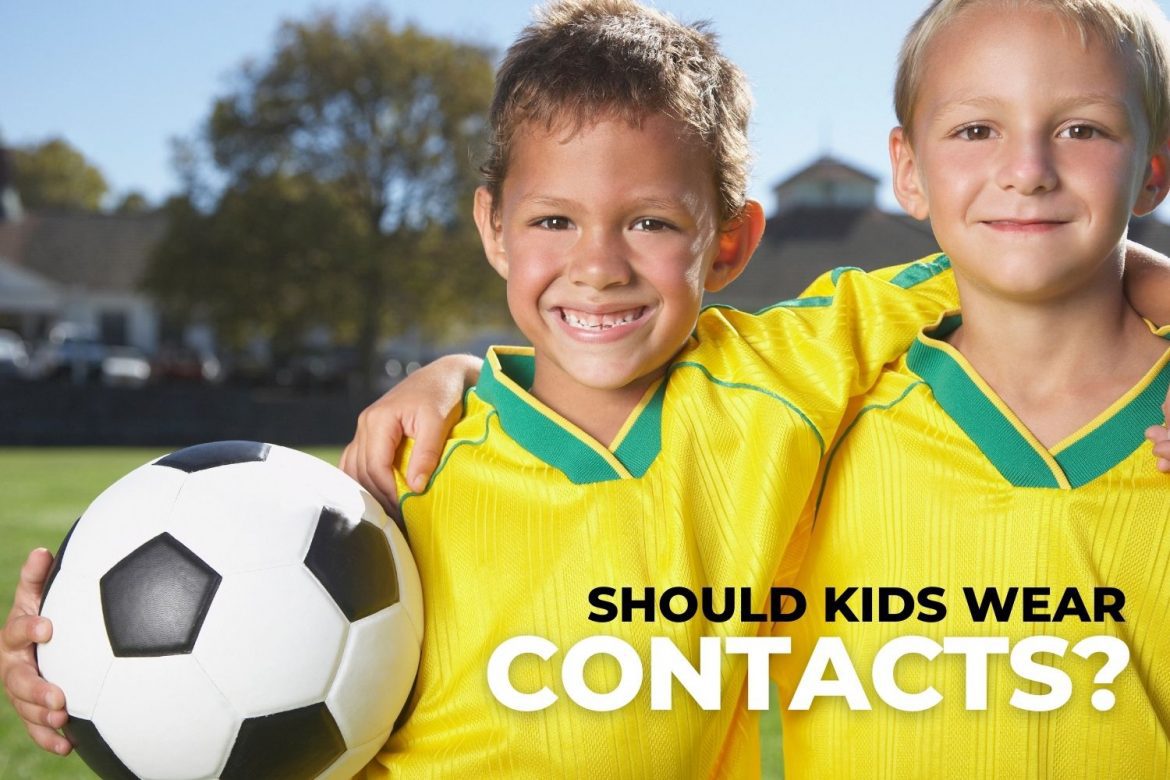![]()
“I broke my glasses… again.” It’s the dreaded phrase heard by parents of glasses-wearing kids everywhere. In an effort to eliminate the inconvenience of lost and broken eyeglasses, many parents are considering contact lenses for kids, but at the same time, are unsure if wearing contact lenses is a safe option.
A lot of research shows contact lenses are not only safe for kids, but in some cases, can also help to correct vision and slow the progression of myopia.
However, just because contact lenses are safe for children, it doesn’t mean contacts are the right option for all kids. This article examines the research behind the safety of contact lenses for children, and considers the pros and cons.
Yes, contacts are safe
Contact lenses are safe and effective in correcting children’s vision, according to the Centers for Disease Control.
Like contact lens-wearing adults, the biggest challenge appears to be being responsible enough to care for them properly.
A recent study in the Journal of Eye & Contact Lenses evaluated the differences between kids and teenagers after wearing contact lenses for 10 years. They found no difference in safety or effectiveness when comparing the two groups.
In other words, kids who are mature and responsible enough to consistently practice the daily hygiene and maintenance steps contact lenses require are generally able to safely wear contact lenses.
Is your child too young for contacts?
Contact lenses for kids provide improved vision and other benefits for children, but that doesn’t mean they are appropriate for kids of all ages.
There’s no specific age when a child becomes eligible to wear contact lenses. Most start between ages 11-13, however, studies have shown children as young as 8 are able to properly put contact lenses in their eyes, safely remove the lenses, and properly care for contact lenses.
Additionally, children with strong prescriptions who are also very active or involved in sports typically do better wearing contacts at an earlier age.
Are there any risks?
Although contact lenses have been proven safe and effective for children, they are still considered a medical device and have some degree of risk associated with them.
For most children, the two most common risks associated with wearing contact lenses are eye infections and eye abrasions or bruising that occurs when putting contact lenses in or taking them out.
In fact, a recent study published in Pediatrics reported that roughly 25% of the 70,000-emergency room visits by children occurring as a result of medical device injuries are related to wearing contact lenses.
Another rare, but serious issue related to contact lenses for kids are corneal ulcers. A corneal ulcer is an open sore appearing on the cornea, the part of the eye that covers the iris and pupil.
Corneal ulcers, if not treated promptly, often result in permanent damage to vision. Because people who wear contact lenses have to touch their eyes on a regular basis, they tend to be at an increased risk of developing corneal ulcers. This fact makes practicing safe handling, storage and cleaning of lenses an essential step for children who wear contacts.
The pros and cons of contact lenses for kids
Transitioning to contact lenses is a big step, and that comes with a lot of responsibility. Most optometrists recommend parents and children sit down and discuss the pros and cons of making the switch to contact lenses.
Pros of contact lenses for kids include:
- Improved self esteem and school performance
Many children are not comfortable wearing glasses in school or around their friends. Whether parents agree with it or not, evidence shows children wearing contact lenses demonstrate a measurable improvement in self-esteem, social perception, and social acceptance when compared to children who wear glasses. In many cases, this improvement has also resulted in improved academic performance in school.
- Improved sports performance and safety
Children involved in sports and wear contacts generally notice a number of benefits versus wearing glasses. Wearing contact lenses during sports allows for better peripheral vision and a full view of the playing field. Unlike glasses, which tend to bounce and/or slide when worn during sports or activities, contact lenses remain stable, providing clear vision.
Wearing contact lenses also reduces the risk of eye and facial injuries occurring as a result of broken lenses or frames.
- Slowing the progression of nearsightedness
Wearing contact lenses that are specially designed to be gas permeable has been shown to slow the progression of nearsightedness, or myopia, in children.
Cons of contact lenses for kids include:
- Increased risk of infection and other eye issues
The primary drawback of children wearing contact lenses are the same observed in teens and adults, mainly a significant increase in eye infections, abrasions, and irritations.
Additionally, those with allergies, especially seasonal allergies, may not be good candidates for wearing contact lenses. In many cases, wearing contact lenses when suffering from allergies increases the discomfort.
When to consider contact lenses for kids
Contact lenses are safe for children to wear. The primary factor to consider when evaluating if contacts are right for your child is whether or not he or she is responsible and motivated enough to take the appropriate steps to wear them safely.
Wearing contact lenses properly not only means being able to put them in and remove them safely, but also means demonstrating the understanding of—and ability to—clean and disinfect contact lenses the right way after each use.
Once it’s been determined contact lenses are an option for your child, the next step is to schedule a consultation with your eye doctor and start the process of arranging an eye exam and contact lens fitting.


